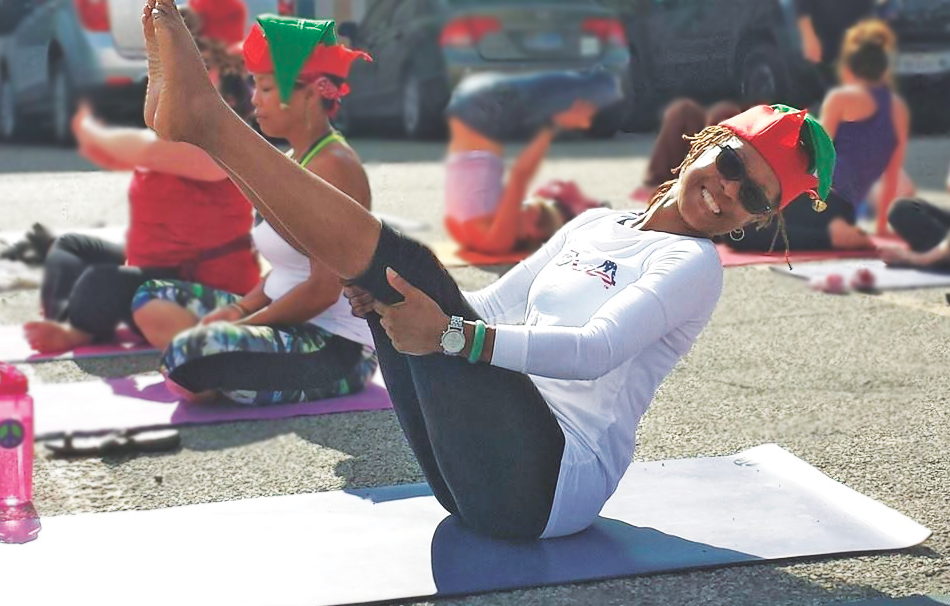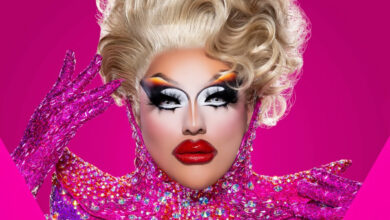
From Darkness to Light
A journey to healing.
by Venita Ray
This is a story about hope, change, and transformation. Change, for me, is usually motivated by insight or pain. In my case, HIV was the catalyst.
My world came to a crashing halt when I was diagnosed with HIV in 2003. The day I was diagnosed, it was like someone turned off the lights and my world went black. I was consumed with shame, guilt, remorse, self-pity, and thoughts of suicide. I was a 44-year-old African-American woman living my dream life as an attorney in Washington DC. I had come a long way from where I started as a teenage mother, high school dropout, and drug addict. I stopped using drugs, went back to school, raised my daughter as a single parent, and completed law school by the age of 37. Everyone told me, “Fight, Venita! You have always been a fighter.” But I was tired of fighting—HIV had been the final blow.
After my diagnosis, I withdrew from the world. I was preparing myself for death even though I knew HIV was not a death sentence. I did not want to live with the stigma and complications of HIV. In December 2004, I resigned from my job, sold my home, and moved to Houston to be near my family. I lived in darkness for four years before I made a decision to reclaim power over my life.
At first glance, this may not appear to be a story of hope and transformation—but it is. I do know that at some point during my journey, I chose to use HIV as a stepping-stone instead of a tombstone. I credit my triumph over darkness to the love of my family, friends, the Houston HIV community, my healthy lifestyle, and advocacy. This is my story about how fitness, nutrition, and advocacy became my stepping-stones to enlightenment, self-love, gratitude, and freedom.
The turning point came one day in 2007. I was having my usual thoughts of suicide when I said to myself, “Either kill yourself or find a way to move on.” My first thought was that I needed to exercise. I had always been physically active for most of my life. After my diagnosis, I went back and forth between wanting to exercise and feeling like “What’s the use?” It was during this time that I went to my first yoga class. Even though I was not flexible and understood nothing, the first yoga class touched me in a place I had closed off for the past four years. I was hooked.
The more I practiced yoga, the better I felt. After class one day, I asked the teacher, Daksha, to teach me how to meditate. I ended up studying yoga with Daksha in her home for the next year.
Since that time, I have had a number of wonderful yoga teachers who have taught me how to apply yoga principles in life both on and off the mat. Awareness of the simple art of breathing is one of the many benefits I learned from practicing yoga. I was also able to reconnect to a God of my understanding on a yoga mat. Yoga is so much more than a physical practice; it is a lifestyle.
It was also during this time that I began to experience menopausal symptoms, facial swelling, and extreme fatigue. I was taking five different meds to manage these symptoms as well as my HIV, but hadn’t had any relief. In desperation, I sought out the help of a personal trainer, Shana Ross, who taught me the importance of nutrition. In yoga, I was learning how to listen to my body, and Shana taught me how to feed my body. I began to use food in a way that allowed my body to function at its best. This was not an easy process for me, but it has been worth all the time and effort.
I don’t remember when I stopped having thoughts of suicide. But one day I realized that I no longer wanted to die. Soon, my menopausal and other symptoms had also disappeared.
I used fitness and nutrition as a way to exercise power over the things in my life that I could control. I could not cure myself of HIV, but I could control what I ate, how much I rested and exercised, and my spiritual growth. I went from being passive in my healthcare to taking charge.
In late 2007, I informed my doctor that I would no longer take all of the meds I was being prescribed. I went from taking five meds to one. Although I developed an undetectable viral load soon after starting meds in 2003, my CD4 count improved at a slow pace in those first four years. By 2008, my CD4 count had doubled. One day, my doctor told me, “I don’t know what you’re doing, but whatever it is, you need to keep doing it.”
The final step in my journey back to health was getting involved in HIV advocacy. It all began when I finally got the courage to attend my first support group. A number of people in the group were talking about an HIV advocacy training program called Project LEAP that was funded by the Houston Ryan White Planning Council (RWPC). In 2008, I completed Project LEAP and went on to serve on the RWPC for several years. As a lawyer, I used to pride myself on being an advocate, but lost my desire for advocacy following my diagnosis. HIV gave me another platform for advocacy on an issue that is near and dear to my heart. Houston has an HIV advocacy community with a long and proud history, and it is my honor to be a part of it.
Another critical part of my activism and healing was my decision to go public about my HIV. In 2011, I agreed to participate in a project called “We Choose to Climb.” I was one of seven women who had overcome major obstacles in their lives who were brought together to train and climb Mt. Kilimanjaro in Tanzania, Africa. The goal of the project was to inspire others to not give up on the “mountains” in their lives. In order to participate, I had to be willing to be open about my HIV-positive status. (There were still a number of family and friends who did not know I had HIV.) I still had some fear, but I knew I was ready. I was tired of living in shame and secrecy. It was during my trip to Africa as an openly HIV-positive woman that I finally got the courage to never be invisible again. I was finally free!
I went on to participate in a Centers for Disease Control (CDC) campaign called “Let’s Stop HIV Together.” I chose this campaign because of its anti-stigma message and inclusion of family members and supporters in the campaign. It gave me a chance to say thank you to my family, because I know I would not be here without their love and support.
Earlier this year, I joined Legacy Community Health Services as the Program Coordinator for the Positive Organizing Project (POP+). POP+ is an advocacy-training program designed by and for people living with HIV/AIDS (PLWHA). The goal of POP+ is to promote greater leadership and involvement by the PLWHA community in decisions that impact their lives. Fifteen PLWHA have just graduated from POP+ after receiving trainings in community organizing, effective leadership, and advocacy. I am so honored to use my legal skills and passion to raise awareness about HIV, impact public policy, end stigma, and help others come to terms with living with HIV.
The last 11 years have made for an amazing journey of highs and lows. It’s still bittersweet to think that without HIV, I may not have discovered the life I have today. I have continued to evolve in my yoga practice, understanding of nutrition, and overall fitness. My friends would probably call me a health-and-fitness fanatic. I love feeling good! Today, I eat a plant-based diet that includes daily juicing and supplements. I recently became a yoga instructor because I love sharing yoga with others. I know that traditional medicine is important, but yoga offers opportunities for self-healing that are not present or always encouraged in traditional medicine. I am on a mission to continue to educate myself and others about the importance of total wellness of the body, mind, and spirit.
I am a woman, mother, grandmother, daughter, sister, aunt, friend, lawyer, advocate, and yogi. In other words, I am so much more than HIV.










